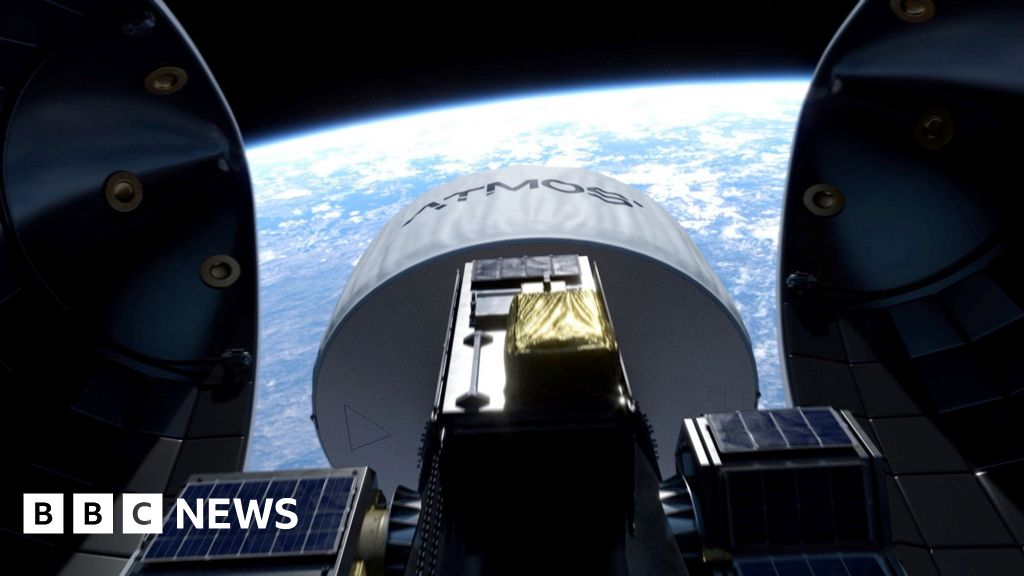NASA's Groundbreaking Observation of Uranus Unveils New Insights into the Ice Giant

On April 7, a remarkable astronomical event took place when Uranus, the seventh planet from the Sun, passed in front of a distant star located approximately 400 light-years away. This celestial phenomenon, known as a stellar occultation, provided NASA scientists with a unique opportunity to investigate the enigmatic ice giant in our solar system.
During the hour-long stellar occultation, Uranus' thick atmosphere played a critical role by refracting the light emitted from the star, resulting in a temporary dimming effect before the light was completely obscured. While it might seem counterintuitive, this dimming allowed astronomers to gather valuable data about Uranus' atmospheric conditions that are typically challenging to study.
A total of 30 astronomers from 18 different observatories across North America participated in observing this rare event. They meticulously collected data, which was then used to create a light curve that illustrates how the brightness of the starlight fluctuated over time. This light curve serves as a vital tool for scientists to extract essential information about Uranus' stratosphere, including measurements of temperature, density, and pressure at various altitudes.
NASA planetary scientist William Saunders commented on the significance of the observations, stating, NASA will use the observations of Uranus to determine how energy moves around the atmosphere and what causes the upper layers to be inexplicably hot. He further noted that researchers will utilize the gathered data to investigate the planets rings, understand atmospheric turbulence, and refine measurements of its precise orbit around the Sun.
Interestingly, despite being nearly 2 billion miles away from the Sun, Uranus' upper atmosphere exhibits temperatures that are hotter than what current physics would predict. The light curve obtained from this recent occultation may provide crucial insights to explain this seemingly paradoxical phenomenon.
This stellar occultation marks a significant milestone for NASA, as it is the first instance in which the agency has orchestrated such a large-scale, collaborative observation of Uranus during an occultation. The team had previously conducted a preparatory observation in November 2024, where they captured a dimmer occultation of Uranus using telescopes situated in Asia. This practice run was invaluable in refining the timing of the actual event and fine-tuning the positional data of Uranus by approximately 125 miles (or 202 kilometers). Although this adjustment may appear minor, it is crucial when coordinating multiple telescopes aimed at a moving target located 2 billion miles away from various locations around the globe.
Beyond the insights into Uranus' peculiar and dynamic atmosphere, this event yielded essential data regarding the planets ring system and its precise orbit around the Sun. This information is particularly significant given that the only spacecraft to have ever flown by Uranus was Voyager 2, which conducted its flyby in 1986. Since that time, scientists have been unable to calculate the planet's exact position in space to a degree better than approximately 100 miles.
Uranus is a fascinating celestial body characterized by 13 known rings and 27 moons, shrouded in an air of mystery. The planet is primarily composed of hydrogen, helium, water, ammonia, and methane, which contributes to its classification as an ice giant. Its interior resembles a cold, gassy slushy, complete with swirling winds and turbulent storms.
Looking ahead, NASA is already preparing for the next significant occultation of Uranus, scheduled for 2031. This upcoming event promises to involve an even brighter background star, potentially allowing for airborne or even space-based observations. Such advancements could significantly enhance our understanding of Uranus, a planet that remains one of the most peculiar in our solar system, featuring a tilted axis, mysterious rings, and moons named after characters from Shakespeares plays, alongside a multitude of secrets waiting to be uncovered.



























